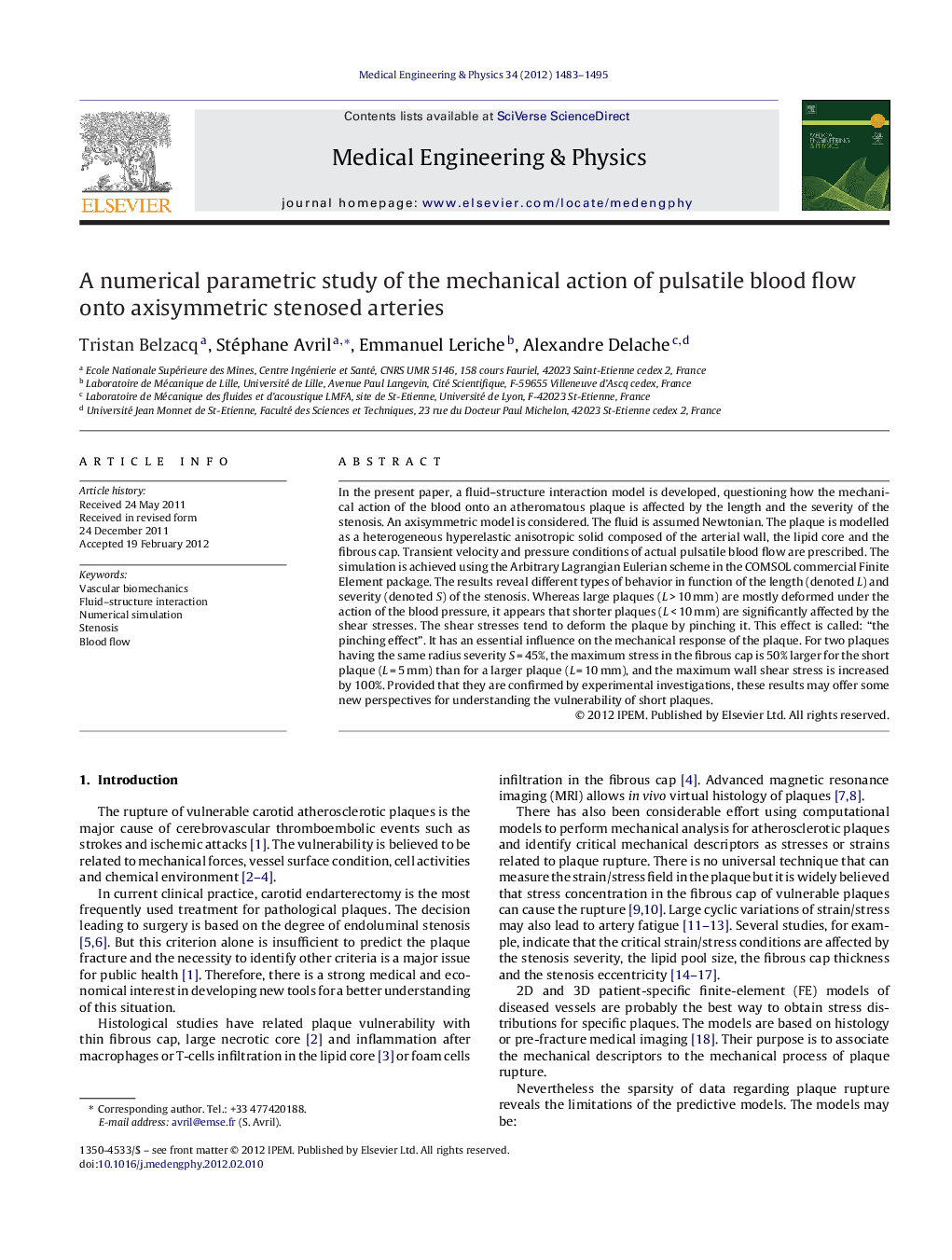| Article ID | Journal | Published Year | Pages | File Type |
|---|---|---|---|---|
| 876348 | Medical Engineering & Physics | 2012 | 13 Pages |
In the present paper, a fluid–structure interaction model is developed, questioning how the mechanical action of the blood onto an atheromatous plaque is affected by the length and the severity of the stenosis. An axisymmetric model is considered. The fluid is assumed Newtonian. The plaque is modelled as a heterogeneous hyperelastic anisotropic solid composed of the arterial wall, the lipid core and the fibrous cap. Transient velocity and pressure conditions of actual pulsatile blood flow are prescribed. The simulation is achieved using the Arbitrary Lagrangian Eulerian scheme in the COMSOL commercial Finite Element package. The results reveal different types of behavior in function of the length (denoted L) and severity (denoted S) of the stenosis. Whereas large plaques (L > 10 mm) are mostly deformed under the action of the blood pressure, it appears that shorter plaques (L < 10 mm) are significantly affected by the shear stresses. The shear stresses tend to deform the plaque by pinching it. This effect is called: “the pinching effect”. It has an essential influence on the mechanical response of the plaque. For two plaques having the same radius severity S = 45%, the maximum stress in the fibrous cap is 50% larger for the short plaque (L = 5 mm) than for a larger plaque (L = 10 mm), and the maximum wall shear stress is increased by 100%. Provided that they are confirmed by experimental investigations, these results may offer some new perspectives for understanding the vulnerability of short plaques.
